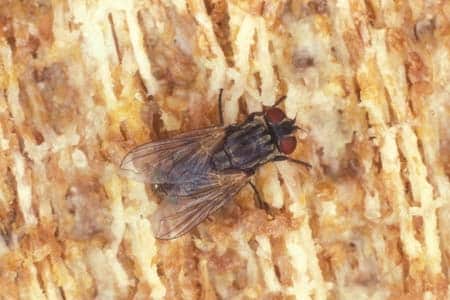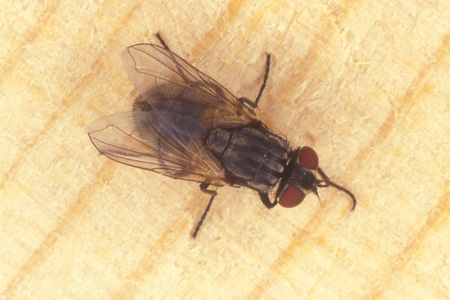Active Seasons




House Fly Appearance and Size Facts
One of the world’s biggest problems is the common house fly, scientifically known as Musca domestica. Their abdomens are gray or yellow-gray with a dark brown to black midline and dark side markings. They have large compound eyes and transparent wings to fly fast.
Identifying House Flies From Other Flies
There are a few key features to look for when telling house flies apart from other types of flies. You can tell house flies are different from others because of their red eyes. Additionally, they have a thorax with four narrow black stripes.
We offer fly control for house flies in the following locations and their surrounding areas:

Behavior and Habitat of House Flies
With their sponge-like mouthparts, house flies prefer liquids. In warm weather, house flies hatch within 12 to 24 hours. They breed in places such as dog feces, on lawns, and in unsanitary trash containers. A batch of house flies contains 75 to 100 eggs.
Adult house flies emerge within four to seven days. A homeowner should know the potential entry points for flies, including open doors, windows, damaged screens, wall cracks, and utility lines. Aside from fruit and vegetables, flies can lay eggs in drains, contributing to their life cycle.

Signs of Infestation of House Flies
Some signs that indicate a house fly infestation include increased fly activity near food sources, fly larvae and pupae in garbage cans, or breeding sites. House flies leave dark spots on walls, windows, and surfaces called fly specks.
As house flies lay their eggs, decaying organic matter emits unpleasant odors. Diseases house flies can transmit to humans and animals include typhoid fever, cholera, bacillary dysentery, hepatitis, polio, and tuberculosis.

Tips for Prevention of House Flies
To prevent house flies, you must keep your environment clean and healthy by using good sanitation practices. Because houseflies are typically associated with trash and garbage, make sure to take trash out to the curb frequently, and keep your trash cans clean of food debris. To block fly entry, regularly remove trash, use well-sealed garbage receptacles, clean pet waste and other potential breeding sites promptly, and install fine mesh screens on your doors and windows.
Seal and store food properly to keep flies out and follow these tips to reduce the risk of a house fly infestation. If these pests start to multiply in your home or become bothersome, contact a professional service like Hulett to keep your house pest-free.
Getting Rid of House Flies
Getting rid of house flies is crucial for a clean and comfortable home, but it can be tricky to do. At-home solutions can only go so far and may not eliminate your house fly infestation fully. Some common tricks include using fly swatters, electric fly zappers, or fly paper, but these pale in comparison to proper pest control. If you still see these pests around your house, it may be time to contact a professional pest control service like Hulett for a fly-free environment.
Effective House Fly Control Solutions
Hulett Environmental Services offers professional fly control solutions to eliminate house flies. We employ practical methods such as fly traps and eco-friendly solutions to help prevent house flies in the first place. Contact Hulett Environmental Services or schedule a free inspection for effective fly control solutions. Say goodbye to flies and hello to a cleaner home.


